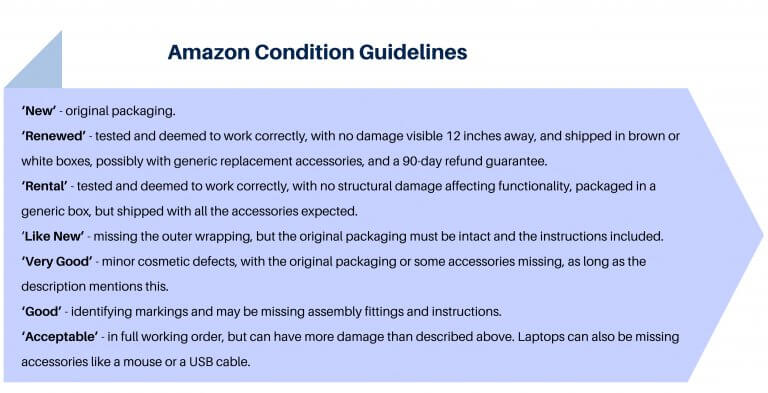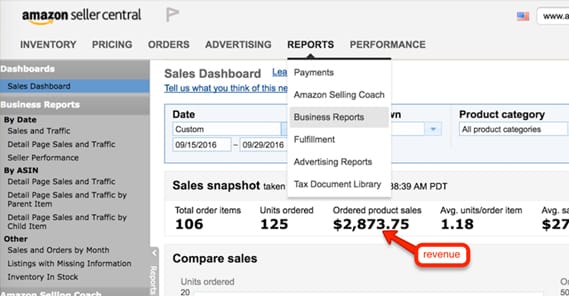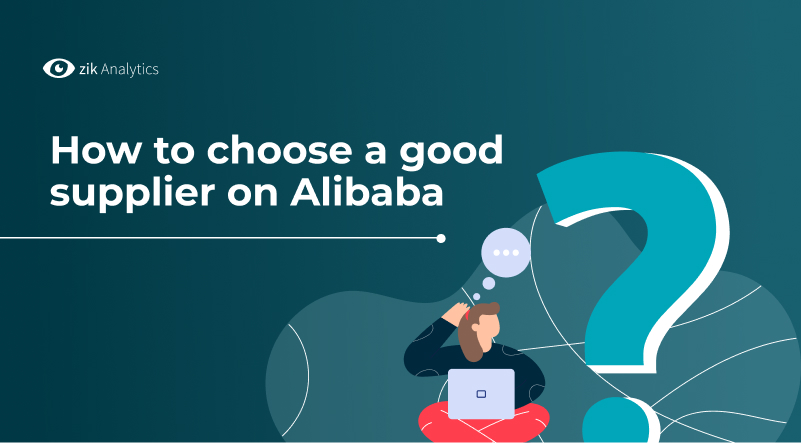Unlocking the Potential of Alibaba: Finding the Best Products to Resell
Alibaba, the world’s largest online wholesale marketplace, offers a vast array of products at competitive prices, making it an ideal platform for sellers looking to resell products on Amazon. With millions of products to choose from, finding the best products to resell can be a daunting task. However, by understanding how to navigate the platform and find reliable suppliers, sellers can unlock the full potential of Alibaba and increase their chances of success.
One of the key benefits of using Alibaba is the ability to connect with suppliers from all over the world. This allows sellers to source products at competitive prices, which can be resold on Amazon for a profit. Additionally, Alibaba’s platform provides a range of tools and services to help sellers find and verify suppliers, including supplier ratings, reviews, and certifications.
To find the best products to resell on Amazon, sellers should start by researching popular products and trends on Amazon. This can be done using tools such as Amazon Best Sellers, Amazon Trends, and Amazon Movers and Shakers. Once a product has been identified, sellers can use Alibaba’s search function to find suppliers who offer the product at a competitive price.
When selecting a supplier, sellers should look for suppliers who have a high rating and a large number of reviews. This indicates that the supplier is reliable and has a good track record of providing high-quality products. Additionally, sellers should check the supplier’s certifications, such as ISO 9001 or CE, to ensure that the products meet international quality standards.
By following these steps, sellers can find the best products to resell on Amazon and increase their chances of success. With the right products and suppliers, sellers can build a profitable business selling from Alibaba to Amazon.
Understanding Amazon’s Policies and Fees: A Guide to Getting Started
Before starting to sell on Amazon, it’s essential to understand the platform’s policies and fees associated with selling. Amazon offers various types of seller accounts, each with its own set of benefits and costs. The two main types of accounts are Individual and Professional. The Individual account is suitable for sellers who plan to sell fewer than 40 items per month, while the Professional account is designed for sellers who plan to sell more than 40 items per month.
The Professional account offers additional benefits, such as access to Amazon’s Fulfillment by Amazon (FBA) program, which can help sellers streamline their shipping and customer service processes. However, the Professional account also comes with a monthly fee of $39.99, while the Individual account has no monthly fee.
In addition to the monthly fee, Amazon also charges various other fees, including a selling fee, shipping fee, and fulfillment fee. The selling fee ranges from 8% to 15% of the sale price, depending on the category of the product. The shipping fee varies depending on the weight and dimensions of the product, as well as the shipping method chosen by the seller.
To set up an Amazon seller account, sellers need to provide basic business information, such as their business name, address, and tax identification number. They also need to verify their email address and phone number. Once the account is set up, sellers can start listing their products and managing their inventory.
Amazon’s policies and fees can be complex, but understanding them is crucial to success on the platform. By taking the time to learn about Amazon’s policies and fees, sellers can avoid common mistakes and ensure that they are in compliance with Amazon’s rules and regulations.
When selling from Alibaba to Amazon, it’s essential to factor in the costs of shipping and fulfillment. Amazon’s FBA program can help sellers streamline their shipping and customer service processes, but it also comes with additional fees. By understanding Amazon’s policies and fees, sellers can make informed decisions about their business and ensure that they are profitable.
How to Find Profitable Products to Sell on Amazon: A Data-Driven Approach
When it comes to selling from Alibaba to Amazon, finding profitable products is crucial to success. With millions of products to choose from, it can be overwhelming to determine which products to sell. However, by using data-driven tools and strategies, sellers can make informed purchasing decisions and increase their chances of success.
One of the most effective ways to find profitable products is to use tools such as Jungle Scout, Helium 10, or AMZScout. These tools provide access to Amazon’s sales data, allowing sellers to analyze trends and identify profitable products. By using these tools, sellers can filter products by sales rank, revenue, and reviews, making it easier to find products that are in high demand.
Another key factor to consider when finding profitable products is the competition. Sellers should aim to find products with low competition, as this will increase their chances of success. By using tools such as Jungle Scout’s “Supplier Database” or Helium 10’s “Black Box”, sellers can identify suppliers who offer products with low competition.
Once a product has been identified, sellers should analyze the data to determine its profitability. This includes calculating the product’s revenue, profit margin, and return on investment (ROI). By using tools such as AMZScout’s “Profit Calculator”, sellers can quickly and easily calculate the product’s profitability.
In addition to using data-driven tools, sellers should also consider other factors when finding profitable products. This includes the product’s seasonality, trends, and customer demand. By considering these factors, sellers can increase their chances of success and find products that will sell well on Amazon.
By following these steps and using data-driven tools, sellers can find profitable products to sell on Amazon and increase their chances of success. Whether you’re a seasoned seller or just starting out, finding profitable products is crucial to success when selling from Alibaba to Amazon.
Negotiating with Suppliers: Tips and Tricks for Getting the Best Deals
Negotiating with suppliers on Alibaba can be a daunting task, especially for new sellers. However, by understanding the art of negotiation, sellers can secure the best prices and build strong relationships with their suppliers. When selling from Alibaba to Amazon, negotiating with suppliers is crucial to ensuring profitability and competitiveness.
One of the most important tips for negotiating with suppliers is to communicate effectively. This means being clear and concise about your needs and expectations, as well as being respectful and professional in your communication. Sellers should also be prepared to provide detailed information about their business and their needs, including their target market, sales volume, and pricing strategy.
Building relationships with suppliers is also critical to successful negotiation. By establishing trust and rapport with suppliers, sellers can negotiate better prices and terms. This can be achieved by being responsive to supplier inquiries, providing feedback on product quality, and making timely payments.
Another key strategy for negotiating with suppliers is to use data and market research to support your negotiation. By providing suppliers with data on market trends, sales volume, and pricing, sellers can demonstrate their expertise and build a strong case for their negotiation. Additionally, sellers can use tools such as Alibaba’s “Supplier Verification” program to verify the credibility and reliability of their suppliers.
When negotiating with suppliers, sellers should also be prepared to walk away if the terms are not favorable. This means having a clear understanding of their minimum acceptable price and being willing to terminate the negotiation if the supplier is unwilling to meet their terms.
By following these tips and strategies, sellers can negotiate effectively with suppliers on Alibaba and secure the best deals for their business. Whether you’re a seasoned seller or just starting out, negotiating with suppliers is a critical skill for success when selling from Alibaba to Amazon.
Some successful negotiation strategies include using the ” anchoring” technique, where the seller makes an initial offer that is lower than their target price, and then gradually increases the price to reach a mutually acceptable agreement. Another strategy is to use the ” bundle” technique, where the seller negotiates a discount for purchasing multiple products from the same supplier.
Shipping and Logistics: How to Get Your Products from Alibaba to Amazon
When selling from Alibaba to Amazon, shipping and logistics can be a complex and time-consuming process. However, by understanding the different shipping options available, sellers can ensure that their products arrive at Amazon’s warehouses quickly and efficiently.
There are several shipping options available when importing products from Alibaba, including air freight, ocean freight, and express courier services. Air freight is the fastest option, but it is also the most expensive. Ocean freight is a more cost-effective option, but it can take several weeks for products to arrive. Express courier services, such as DHL and UPS, offer a balance between speed and cost.
Regardless of the shipping option chosen, tracking and insurance are crucial to ensuring that products arrive safely and securely. Sellers should always use a reputable shipping company that provides tracking information and insurance coverage. This will help to prevent losses and ensure that products are delivered to Amazon’s warehouses on time.
Another important consideration when shipping products from Alibaba to Amazon is customs clearance. Sellers must ensure that their products comply with all relevant customs regulations and that they have the necessary documentation to clear customs. This includes obtaining a commercial invoice, packing list, and certificate of origin.
Amazon also has its own shipping and logistics requirements that sellers must comply with. This includes using Amazon-approved shipping carriers and providing tracking information for all shipments. Sellers must also ensure that their products are properly packaged and labeled to prevent damage during transit.
By understanding the different shipping options available and complying with Amazon’s shipping and logistics requirements, sellers can ensure that their products arrive at Amazon’s warehouses quickly and efficiently. This will help to improve customer satisfaction and increase sales.
Some popular shipping options for selling from Alibaba to Amazon include:
- Air freight: This is the fastest option, but it is also the most expensive.
- Ocean freight: This is a more cost-effective option, but it can take several weeks for products to arrive.
- Express courier services: This includes services such as DHL and UPS, which offer a balance between speed and cost.
Optimizing Your Amazon Listings for Maximum Visibility
When selling from Alibaba to Amazon, optimizing your Amazon listings is crucial to maximizing visibility and driving sales. A well-optimized listing can help your product stand out from the competition, increase conversions, and ultimately drive more sales.
One of the most important elements of an Amazon listing is the product title. The title should be descriptive, concise, and include relevant keywords that customers might use when searching for your product. It’s also important to include the brand name and product name in the title to help with branding and recognition.
The product description is another critical element of an Amazon listing. The description should be detailed, informative, and include relevant keywords that customers might use when searching for your product. It’s also important to include high-quality product images that showcase the product from different angles and in different lighting conditions.
Amazon also uses a complex algorithm to rank products in search results, so it’s essential to optimize your listing for search. This includes using relevant keywords in the title, description, and keywords section of the listing. It’s also important to ensure that your product is categorized correctly and that you’re using the correct keywords in the keywords section.
In addition to optimizing the listing itself, it’s also important to optimize the product images. Amazon allows sellers to upload multiple product images, so it’s essential to use high-quality images that showcase the product from different angles and in different lighting conditions. It’s also important to ensure that the images are optimized for search by including relevant keywords in the image file names and alt tags.
By optimizing your Amazon listings, you can increase visibility, drive more sales, and ultimately grow your business. Whether you’re a seasoned seller or just starting out, optimizing your listings is an essential step in selling from Alibaba to Amazon.
Some tips for optimizing your Amazon listings include:
- Use relevant keywords in the title, description, and keywords section of the listing.
- Include high-quality product images that showcase the product from different angles and in different lighting conditions.
- Ensure that your product is categorized correctly and that you’re using the correct keywords in the keywords section.
- Optimize your product images for search by including relevant keywords in the image file names and alt tags.
Managing Your Inventory and Fulfilling Orders: A Guide to Amazon FBA
When selling from Alibaba to Amazon, managing your inventory and fulfilling orders is crucial to ensuring timely and efficient delivery of products to customers. Amazon’s Fulfillment by Amazon (FBA) program is a popular choice among sellers, as it allows them to store their products in Amazon’s warehouses and leverage Amazon’s logistics and customer service expertise.
One of the key benefits of using Amazon FBA is that it allows sellers to focus on marketing and sales, while Amazon handles the logistics and customer service. This can help to reduce the administrative burden on sellers and free up more time to focus on growing their business.
To get started with Amazon FBA, sellers need to create a professional seller account and enroll in the FBA program. They will then need to send their products to Amazon’s warehouses, where they will be stored and fulfilled by Amazon.
Amazon FBA offers a range of benefits, including fast and reliable shipping, customer service, and returns handling. It also provides sellers with access to Amazon’s vast customer base and trusted brand.
However, Amazon FBA also has some fees associated with it, including a monthly inventory storage fee, a shipping fee, and a fulfillment fee. Sellers need to carefully consider these fees when deciding whether to use Amazon FBA or not.
Some tips for managing your inventory and fulfilling orders with Amazon FBA include:
- Use Amazon’s inventory management tools to track your stock levels and ensure that you have enough products to meet customer demand.
- Set up a shipping plan to ensure that your products are delivered to Amazon’s warehouses on time.
- Use Amazon’s customer service tools to handle customer inquiries and issues.
- Monitor your performance metrics, such as order fulfillment rate and customer satisfaction, to identify areas for improvement.
By using Amazon FBA, sellers can streamline their logistics and customer service operations, and focus on growing their business. Whether you’re a seasoned seller or just starting out, Amazon FBA is definitely worth considering when selling from Alibaba to Amazon.
Monitoring and Analyzing Performance: How to Use Amazon Seller Metrics
When selling from Alibaba to Amazon, monitoring and analyzing performance is crucial to making informed business decisions and optimizing sales. Amazon provides a range of seller metrics that can help sellers track their performance, including sales, profits, and customer feedback.
One of the most important metrics for Amazon sellers is the sales metric. This metric shows the total number of sales made by the seller over a given period of time. By tracking sales, sellers can identify trends and patterns in their sales data, and make informed decisions about inventory management and pricing.
Another important metric for Amazon sellers is the profit metric. This metric shows the total profit made by the seller over a given period of time. By tracking profits, sellers can identify areas where they can improve their pricing and inventory management strategies to increase profitability.
Customer feedback is also an important metric for Amazon sellers. This metric shows the overall satisfaction of customers with the seller’s products and services. By tracking customer feedback, sellers can identify areas where they can improve their customer service and product quality.
Amazon also provides a range of other metrics that can help sellers track their performance, including inventory levels, shipping times, and return rates. By tracking these metrics, sellers can identify areas where they can improve their operations and optimize their sales.
Some tips for using Amazon seller metrics include:
- Track your sales and profits regularly to identify trends and patterns in your sales data.
- Use customer feedback to identify areas where you can improve your customer service and product quality.
- Monitor your inventory levels and shipping times to ensure that you are meeting customer demand and delivering products on time.
- Use Amazon’s return rate metric to identify areas where you can improve your product quality and reduce returns.
By using Amazon seller metrics, sellers can make informed business decisions and optimize their sales. Whether you’re a seasoned seller or just starting out, monitoring and analyzing performance is crucial to success when selling from Alibaba to Amazon.







